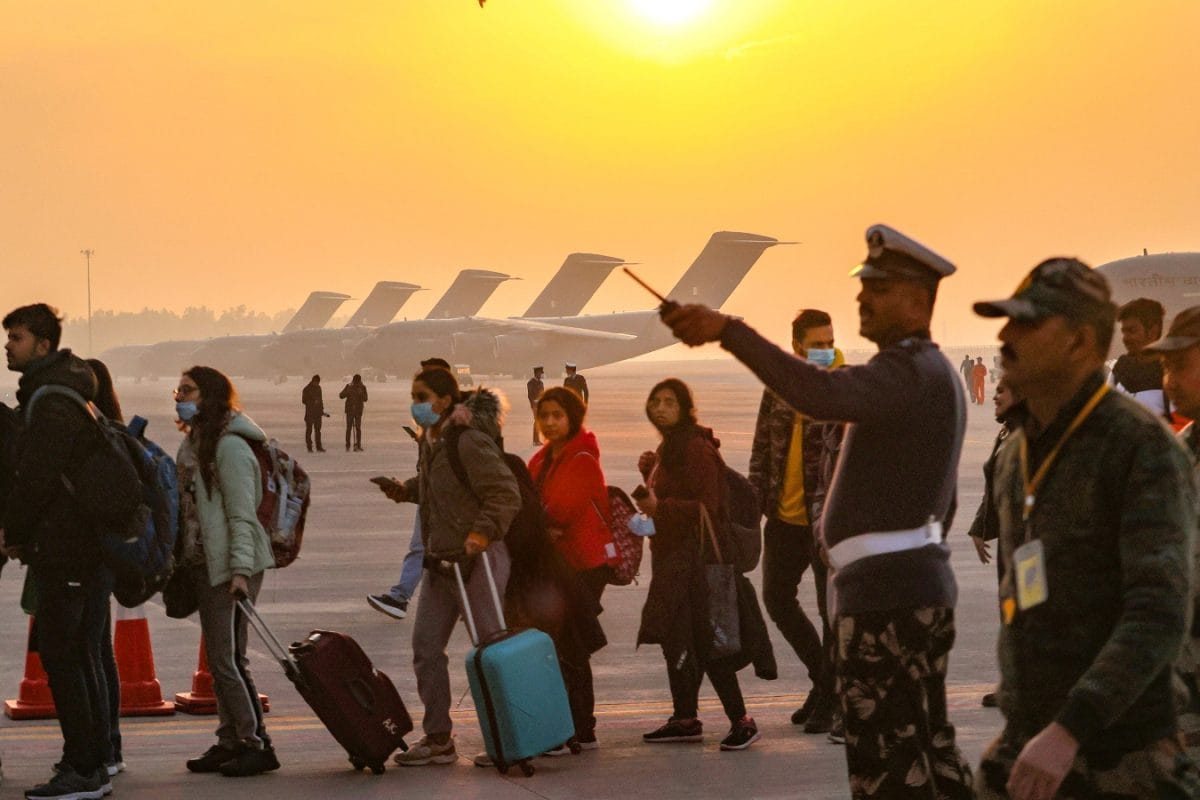

Evacuating Indian citizens from Iran amidst escalating regional tensions presents a unique set of challenges, making it significantly more complex than the "Operation Ganga" evacuation from Ukraine in 2022. Several factors contribute to this increased difficulty, ranging from geopolitical constraints and airspace restrictions to the very nature of the conflict and the logistical hurdles involved.
One of the primary differences lies in the geopolitical landscape. Unlike Ukraine, which borders several countries that provided safe passage and logistical support for evacuation flights, Iran is surrounded by nations where relations with India are strained or non-existent. Pakistan's airspace is closed to Indian flights. Land routes through Pakistan and Afghanistan are also not viable options due to security concerns and logistical challenges. Evacuation via eastern neighbors of Iran like Pakistan and Afghanistan is not only a logistical challenge but also geopolitically difficult. On one hand, the Pakistani airspace is shut for India. Land route evacuation is also out of the question. Though India-Afghanistan relations have improved over the past few months, the logistical challenge remains.
Furthermore, the nature of the conflict itself presents unique challenges. While the conflict in Ukraine was initially focused in the eastern part of the country, allowing for evacuations through the relatively safer western borders, the current tensions in the Middle East involve strikes in multiple areas across Iran. This widespread insecurity makes it difficult to establish safe zones and evacuation routes within the country. Israeli airstrikes are happening in multiple areas, not just one region, and the transport network isn't reliable. This makes movement within Iran risky and unpredictable.
The scale and logistics of the operation also differ significantly. During "Operation Ganga," approximately 22,500 Indian nationals were evacuated from Ukraine between February and March 2022. In contrast, there are an estimated 10,000 Indians currently in Iran, including students, workers, and sailors. While the number of people to be evacuated is smaller, the logistical difficulties are far greater. The Indian government hasn't announced a named operation like it did for Ukraine. One key reason is that logistics and security issues are making things more complicated.
Given these constraints, the Indian government is exploring alternative evacuation routes. The first batch of around 110 people, mostly students, has crossed over to Armenia. Around 600-700 people have been moved to the safer city of Qom in central Iran. Qom is an important religious site having various mosques and seminaries, including the famous Azam mosque. The land route through Armenia has emerged as a primary option, with the Indian government engaging with Armenian authorities to facilitate the safe passage of its citizens. However, this route presents its own challenges, including the need for coordination with multiple agencies and ensuring the safety and security of evacuees during transit. The next batch of Indians may likely take the Turkmenistan route to get out of Iran.
The Indian embassy in Tehran has been actively advising Indian nationals to move to safer locations outside the capital city and has established emergency helplines to provide assistance. The embassy is also facilitating the relocation of students to safer cities within Iran, such as Qom, which are considered less vulnerable to attacks.
In conclusion, while India has a proven track record of successfully evacuating its citizens from conflict zones, the situation in Iran presents a unique set of challenges that demand a nuanced and multifaceted approach. The geopolitical constraints, airspace restrictions, and the nature of the conflict make a large-scale evacuation far more complex than what was experienced during "Operation Ganga." The Indian government is working closely with regional partners and exploring all feasible options to ensure the safe return of its citizens, but the road ahead is fraught with difficulties.